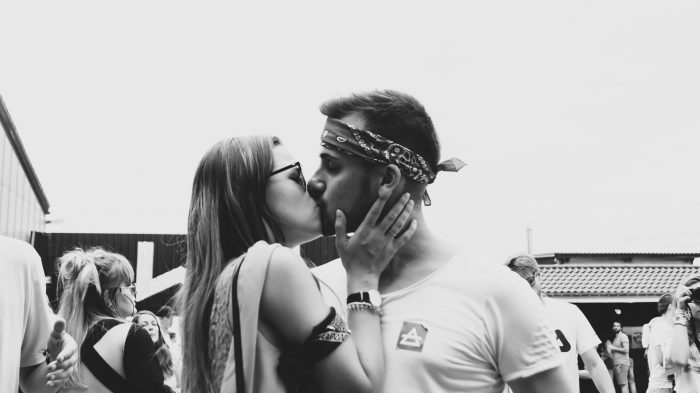We have all probably heard the age-old statement that solidifies that we cannot love someone else until we love ourselves.
The culturally believed truth in this statement has brought hundreds of humans into my office since I began my career as a therapist.
Humans who, just like you, struggle with shame, secret traumas, self-criticism, body-based judgements, and a subtle but deep pain due to not being held in the sacred union of love with another human.
The statement I outlined above is the most common statement I hear in my office when reviewing why a romantic relationship has not endured the test of time, from a client’s perspective.
Clients tell me time and time again that their romantic relationships have not worked out because they “do not know how to love themselves.”
That due to not knowing how to speak to themselves with softness, or touch their own skin with tenderness, or prioritize their own pleasure that the love they shared with another ended early.
Most clients who share this statement continue to express that they are “coming to therapy to learn how to love themselves.”
A statement I applaud. I commend. I honour. Because I have been there.
I once attended therapy in a whirlwind of confusion regarding a romantic relationship ending that I pinpointed to my inability to love myself. And as someone who did this, and as a therapist who guides humans through this process today, I must admit there is some truth interwoven into this statement.
It is hard to receive pleasure if we are prioritizing everything above ourselves.
It is hard to speak softness to another if the voice of shame is speaking in our mind.
It is hard to love another if we are internally undergoing a battle with our authenticity.
However, we do not learn to love by being on an island of isolation.
Just like every other piece of knowledge we acquire while contained in these flesh bodies, we learn to love through being inspired, encouraged, and taught by others.
We learn love through connection.
Which means you do not have to attend therapy to learn how to love, but you do need to attend to your authenticity to learn how to love.
It is only when we are fully accepted in our authenticity that we can feel fully attached.
Being attached to another in our authenticity forms the deepest bond of connection, which is love.
You start this process by cultivating your authenticity, which is most commonly a process of removing expectations of how you think you should be in connection.
This process is so essential because so many of us were not loved in our authentic expression in our family homes.
We may have been loved if we did this. We may have been loved if we acted this way. We may have been loved if we never did that or this and that too.
That is not authentic love. That is something else.
That is something else that does not facilitate self-love.
This is why for those of us who did not learn how to love in our family home, who may have experienced abuse, neglect, or a host of dynamics that diminished the experience of being loved by our family, we are still not without opportunity to learn to love.
You can say the same to those of us who maybe did grow up in familial soils ripe with love but experienced heartbreak or abuse in later adult life.
Regardless of what has or has not happened, we can all learn to fully and deeply love.
It starts with opening to authentic connection.
Due to my history of abuse, I learned to love in therapy.
I didn’t learn love because my therapist sent me home to practice self-care rituals like bubble baths, journaling, eating three fresh meals, or practicing yoga. No, I learned how to love by being loved by my therapist.
I am not talking about any form of romantic relationship happening in the therapeutic context. When it comes to therapy, I have never experienced any form of boundary violation in the realms of sexuality or romantic endeavours.
I have, however, been deeply loved, accepted, and cared for by therapists. So much so that I was able to develop a map of how I wanted to love and be loved by others too.
I was moved by the love they showed me in session to want to show up differently in the rest of my life.
I wanted to love, honestly accept, and care for myself in the ways they did for those 50 minutes each week.
I wanted to experience that type of intimacy with myself alone.
Not with only myself, but with everyone around me too.
I didn’t learn how to love by investing in any self-care ritual scheduled into a calendar.
I didn’t learn how to love by prioritizing pleasure above every other priority.
I didn’t learn how to love by being tenderly touched all the time.
I learned to love by receiving love in the place it felt safe for me to receive love.
Because, like so many humans, love has hurt. Love has been painful. Love has been poisonous.
And at that time in my life, it wasn’t safe to play with receiving love in more traditional formats, because like many of the humans I work with today as a therapist, I have a history of trauma that contains sexual violence and abusive relationships.
This means my understanding of love is confusing and challenging at times.
I know that love can be exploited to derive pain.
I know that love is not always innocent.
I know that love can be manipulated.
I know that love can hurt and harm.
Love in my past, like many of my clients, was rooted in pain.
Which is why therapy was the place I learned how to love. It was structured. It was safe. It was supportive. It was honest. It was unconditioned. It was authentic.
That felt experience of being so loved by my past therapists is how I learned to love. And as a therapist today, my only job is to hold a space of love for my clients. To offer them so much acceptance, kindness, and tenderness that eventually they begin to offer themselves this too.
As a therapist today, showing my clients how to love is the only intention I hold.
They say that you can’t love someone until you know how to love yourself and to that I say, people teach us how to love ourselves by loving us.
By being tender with us. By touching us. By being truthful with us.
We learn to love by being loved.
~
 Share on bsky
Share on bsky


Read 16 comments and reply